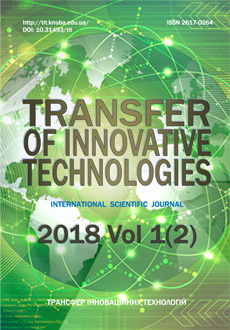The meanings and techniques of lighting in the car service
DOI:
https://doi.org/10.31493/tit1812.0103Keywords:
light, light gray deposit, objects and elements of the pavement, criteria of influence, measures for the engineering improvement of the city, objects of car serviceAbstract
The notion of a harmonious light environment involves the execution of a variety of sos-free functions. First of all, it is the creation of comfortable living conditions for people, which is to ensure the safety of traffic and pedestrians and the holistic perception of city accounting in the dark period of time. The provision of light comfort in the evening and at night is achieved on the basis of rationally selected quantitative and qualitative characteristics of artificial lighting, which are regulated by the norms. Use of territories under the car-care center is used by special measures for engineering improvement. This makes it possible to create a high level of general and artistic and aesthetic perception of the objects of the city's car service. Quality lightning is profitable. Since, the good lightning of the city reduces the number of injuries in an accident. The level of personal safety currently depends on the quality of lighting of courtyards, footpaths and playgrounds. Information to enrich or change the emotional comfort of a person is possible with the help of the right color. The basis of the formation of architectural and urban light space play of colors of the light are solved by multiple tasks: there is a light floral environment, take into account the stakes and the transfer of the color from artificial light sources at night. It is not allowed color bright "separation", bright" failure", excessive brightness, which violates the unity of the composition. The quality of light delivery depends on the spectral composition of the light source, which determines its light transmission. Lighting techniques are aimed at identifying the characteristics and effects of lighting. Lighting of facades of buildings with general flood lighting should provide visibility of its decorative and plastic elements. The main requirement for the system of light ensembles of the city is-taking into account the visual perception of a person of the illuminated object in space.References
Mykolaivska I.A., 2006. Public welfare ofterritory. Moscow, Academy, 272 (in Russian).
Yargina S.N., Kositsky Ya.V., Vladimirov V. V., 1986. Fundamentals of the theory of urban planning. Moscow, Stroyizdat, 325 (in Russian).
SNiP 11-4-79б, 1980. Natural and artificial lighting. Entered since January 1, Moscow, 48 (in Russian).
CH II-4-79, 1991. Natural and artificial lighting. Norms of design. Moscow, Lighting, 1-31 (in Russian).
Ponomarev I.P., 1989. Engineering improvement of urban areas. Kyiv, UMK higher education, 124 (in Ukrainian).
Volotskoi N.V., Dadonov M.S., Mykolaic L.D., 1981. Lighting of open spaces. Leningrad, Energoizdat, 232 (in Russian).
Osietrin M.M., Petrunya O.M., 2003. Analysis of peculiarities of location and operation of service stations in Kyiv (on the example of Solomianskyi district). Urban planning and territorial planning. Scientific and technical collection Kyiv national University of construction and architecture. Iss.19, 263 (in Ukraine).
Matiash S., 1990. Man in town: Sociology Essays. Kyiv, Politizdat, 223 (in Ukraine).
DBN 360-92*, 1993. City building. Planning and construction of urban and rural settlements, Kyiv, Ukrarhnudinform, 107 (in Ukraine).
Yudin V.A., Samoilov D.S, 1975. City transport, Moscow, Stroyizdat, 287 (in Russian).
Sigiev A. V., 1972. Vehicles and city planning, Moscow, Stroyizdat, 22 (in Russian).
Markov O. D. 1998. Organization of AV service centers, Lviv, Oriiana Nova, 529 (in Ukraine.
Osietrin M., Dvorko O., 2016. A model for assessing the effectiveness of unregulated inter sections on the road network of Kyiv. Underwater technology, Vol.04, 100 ((in Ukraine).
Osietrin M., Bondar O., 2016. Urban planing experience in the implementation of the final principle of the organization of traffic on the approaches to bridges. Underwater technologies, Vol. 03, 82 (in Ukrainian).
Petrunya O.M., 2017. Ways of Considering Traditions when Forming the System of Maintenance in Ukraine. Underwater technologies, Vol. 07, 57-63 (in Ukrainian).
DBN V. 2.5 – 8 – 2006, 2006. Natural and artificial lighting. Engineering equipment of buildings and structures. Kyiv, Ministry of Construction, 96 (in Ukrainian).
JAGAN V. 2006. Illumination of objects/translation from Polish. Lviv, EcoInform, 42 (in Ukrainian). http://stroifaq.com
Shymko V.T., 2006. Architecturall-design engineering. Moscow, Art-architecture, 384 (in Russian).
Husev N. M., Makarevich V. G., 1973. Light architecture. Moscow, Stroiizdat, 137-106 (in Russian).
Keler V., Luckhardt V., 1961. Light in architecture. Moscow, Gosstroiizdat, 182 (in Russian).
Downloads
How to Cite
Issue
Section
License
Copyright (c) 2020 Transfer of Innovative Technologies

This work is licensed under a Creative Commons Attribution-NonCommercial-NoDerivatives 4.0 International License.
Our journal abides by the CREATIVE COMMONS copyright rights and permissions for open access journals.
Authors, who are published in this journal, agree to the following conditions:
1. The authors reserve the right to authorship of the work and pass the first publication right of this work to the journal under the terms of a Creative Commons Attribution License, which allows others to freely distribute the published research with the obligatory reference to the authors of the original work and the first publication of the work in this journal.
2. The authors have the right to conclude separate supplement agreements that relate to non-exclusive work distribution in the form in which it has been published by the journal (for example, to upload the work to the online storage of the journal or publish it as part of a monograph), provided that the reference to the first publication of the work in this journal is included.




